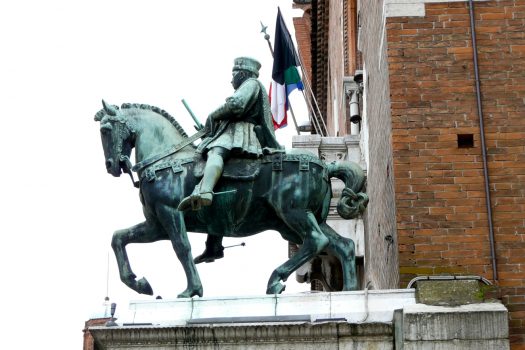- CountryItaly
- Town:Ferrara
-
Year of creation:1451
- Rider(s):Niccolò III d'Este
(1383 -1441), was Marquess of Ferrara from 1393 until his death. He was also a condottiero. He inherited the rule of the city in 1393 when only 10 years old.
Azzo X d’Este contested Niccolò’s right to rule in Ferrara due to his illegitimate birth, even though Niccolò had been legitimated by his father. However, Azzo’s mercenary forces were defeated and Azzo himself taken prisoner and subsequently imprisoned thus removing the threat to Niccolò’s rule.
In 1403 he joined the league formed against Gian Maria Visconti, Duke of Milan, being appointed Captain General of the Papal Army by Pope Boniface IX.
In 1425 Niccolò had both his wife Parisina and his illegitimate son Ugo executed on charges of adultery, as well as decreeing that all women within his domains found to be guilty of adultery were to be put to death. He had to rescind this order once it was determined that this action would depopulate Ferrara. In that year he was again commander-in-chief of the anti-Visconti league. In 1429 his illegitimate son was named heir of the Marquisate.
The role of Niccolò as a prestigious leader in Italy was confirmed when his city was chosen as the seat of a council in 1438. - Sculptor(s):Cristoforo and Baroncelli
Niccolò Baroncelli (1434 – 1453) sculpted the horse and Antonio di Cristoforo (c.1430 – 1482) the rider. Both were Italian sculptors.
Erected in 1451 in Ferrara, this equestrian statue would have been the oldest surviving equestrian statue since antiquity, had it not been destroyed during the Napoleonic invasions in 1796. A later copy of this statue is placed on a marble base in the form of a triumphal arch, termed the Arco del Cavallo.
























